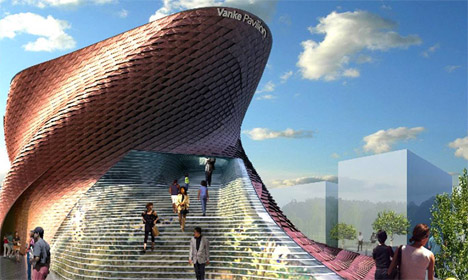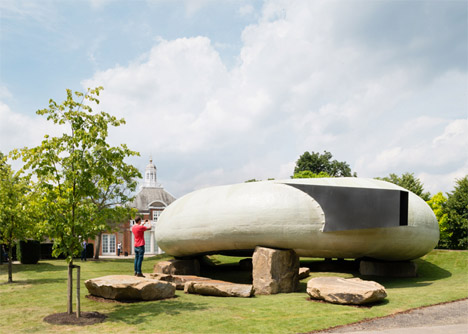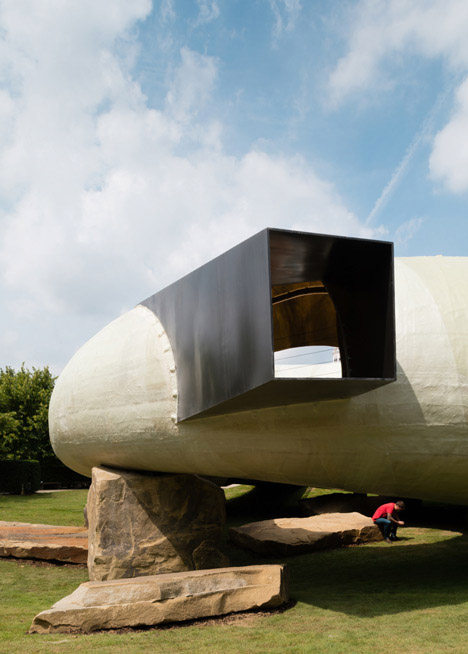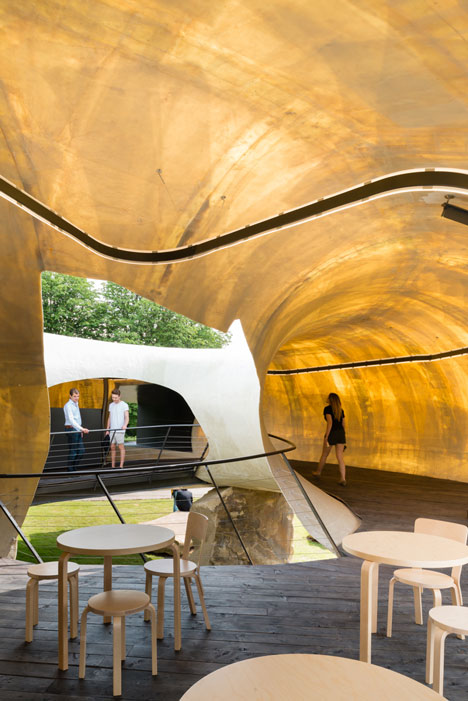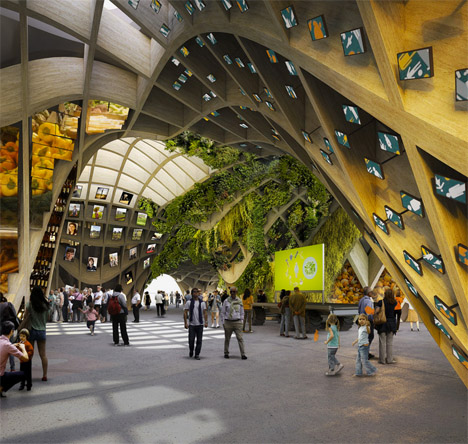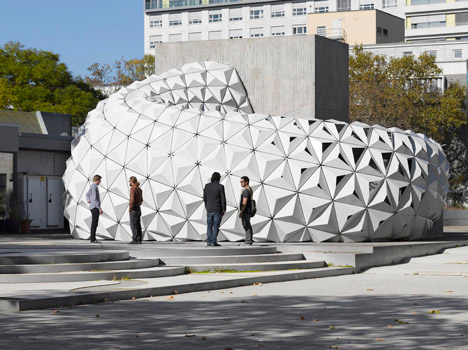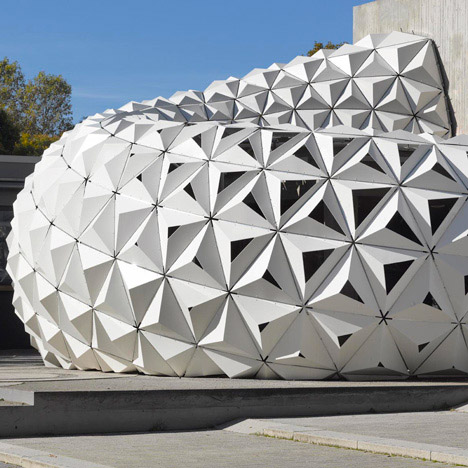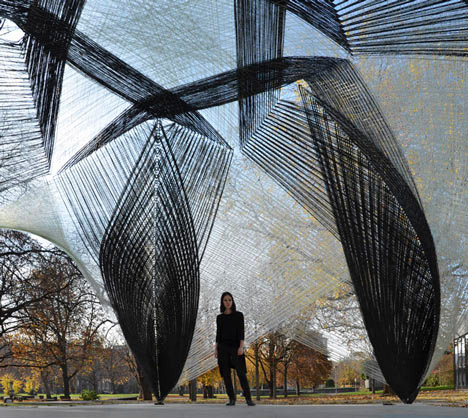Vanke Pavilion by Daniel Libeskind
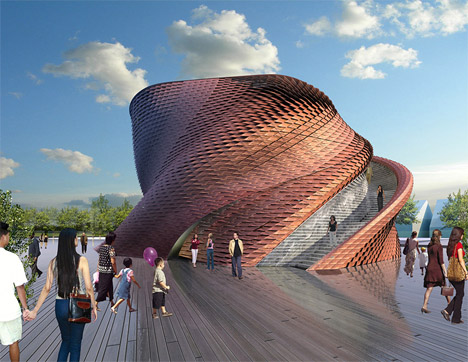
The twisting shape of architect Daniel Libeskind’s Vanke Pavilion design takes its inspiration from the ancient thinking of Confucius and Lao Tzu. Evocative of a massive dragon covered in scales, the structure houses an installation of 300 multimedia screens designed to create the feeling of a virtual forest.
Smiljan Radic’s Serpentine Pavilion
Looking like the shell of some monstrously oversized snail, Smiljan Radic’s Serpentine Gallery Pavilion 2014 is balanced precariously atop a pile of rocks. From the outside it seems incredibly heavy and solid, but inside, with the light streaming through the shell, it’s clear that the structure is actually quite light and delicate.
Latticed France Pavilion by XTU Architects
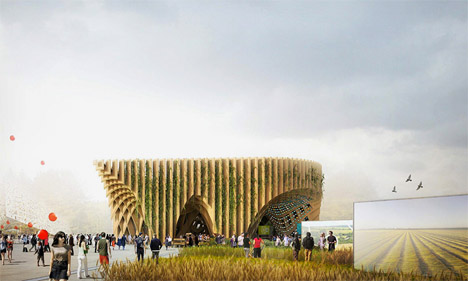
Made of locally sourced reusable wood, France’s pavilion for Expo Milan 2015 is envisioned as a covered market that can be disassembled and reused. Herbs, hops and other vegetation climb up the latticed wood structure, which the designers see as a metaphor for new perspectives on food and nutrition.
ArboSkin Bioplastic Pavilion
This curving, faceted pavilion is made of bioplastic containing over 90 percent renewable materials. Made by students and professors at Stuttgart University’s Institute of Building Structures and Structural Design, the freeform modular pavilion demonstrates the structural properties of this new bioplastic developed for use in the construction industry.
High-Tech Research Pavilion by ICD and ITKE
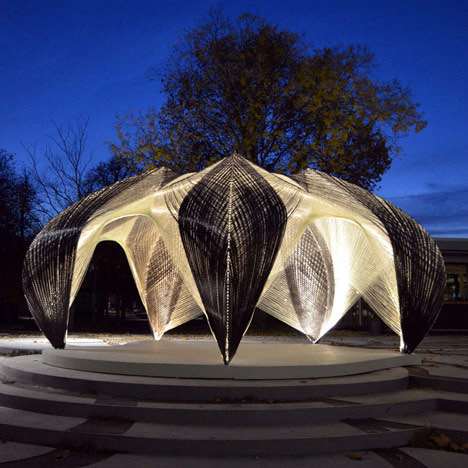
In another case of high-tech and highly unconventional construction, the University of Stuttgart programmed a robot to wind 60 kilometers of carbon and glass fiber filaments into a pavilion. The same team that created the carbon fiber pavilion inspired by beetle shells also came up with this beautiful structure. The designers researched the load-bearing capabilities of a lobster’s exoskeleton, which is composed of complex layers of glucose and protein. The robot wound resin-saturated carbon and glass fibers onto a steel frame rotating on a turntable.
